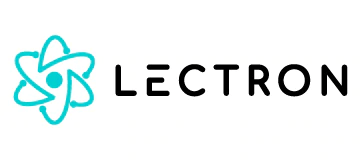3 EV charging questions owners should know about
There are 3 EV charging questions that every EV owner needs to be clear about.
- What are AC and DC charging?
- What are Level 1 and Level 2 charging?
- What’s the difference between Tesla and non-Tesla EVs?
Unlike traditional gas pumps, EV charging connector types can differ greatly in terms of power output and compatibility type. A charger that works with one type of EV might not work with another.
Let’s take a look at these questions one by one.
What are AC and DC charging?
EV charging can be broadly divided into two main categories: AC and DC charging (also known as DC fast charging).
AC stands for alternating current. It’s the type of electricity that comes out of your outlets at home. AC chargers provide a lower current for powering your EV than DC chargers (from 1.3 kW - 12 kW), and are further divided between Level 1 and Level 2 chargers. In the US, this includes both Tesla and SAE-J1772 EV plugs (but more on that later).
Examples of AC chargers include the Lectron V-BOX charging station, the Lectron Tesla Charger, and the Lectron 40A Level 2 Charger.
DC stands for direct current. It powers your EV directly from a power source at a much higher amperage and a faster rate (usually between 15 kW and 350 kW, and 15 - 45 minutes), and includes Tesla, CCS, and CHAdeMO charging types.
DC charging tends to be significantly more expensive than AC charging because the infrastructure usually needs to be completely built from scratch, whereas the US power grid already runs on AC power.
What’s the difference between Level 1 and Level 2 charging?
There are two types of AC chargers: Level 1 and Level 2 chargers. The key difference between them is the power output.
Level 1 chargers (like the Lectron 16A Portable Charger) plug into a NEMA 5-15 outlet, or a typical wall outlet, and produce 3 - 5 miles of range per hour. Level 2 chargers (like the Lectron 40A Level 2 Charger) are significantly more powerful. That’s because they plug into a NEMA 14-50 outlet, or a large appliance outlet, and can produce 18 - 28 miles of range per hour.
Since Level 1 chargers plug into a common NEMA 5-15 wall outlet, they are convenient and good for keeping in your car in case of an emergency. However, since Level 2 chargers have a higher amperage, voltage, and kilowatt capacity, they are able to charge your EV at a much faster rate when compared with Level 1 chargers.
What’s the difference between Tesla and non-Tesla EVs?
It might be helpful to think of Tesla as the Apple of EVs. That’s because Tesla uses its own EV charging plugs for both AC and DC charging, which are incompatible with other EVs. Tesla chargers won’t work with non-Tesla EVs or vice versa (without the use of EVSE adapters).
In the US, non-Tesla EVs use what’s called an SAE-J1772 (or simply J1772) charging plug for AC charging, and a CCS charging plug for DC charging (a couple of Japanese EV manufacturers, like Mitsubishi and Nissan, use a third type for DC charging, known as CHAdeMO).
To help deal with EV charging compatibility problems, Lectron carries a wide selection of electric car plug-in adapters, including a CCS to Tesla Adapter, a J1772 to Tesla Adapter, and a Tesla to J1772 Adapter.
Key Takeaways
- EV charging is divided between AC and DC charging
- AC charging is more common but DC charging is much faster
- AC charging is divided between Level 1 and Level 2 charging
- Level 1 chargers plug into a common NEMA 5-15 outlet
- Level 2 chargers are faster than Level 1 chargers and plug into a NEMA 14-50 outlet
- Tesla uses its own charging system that is incompatible with other EVs without the use of charging adapters
